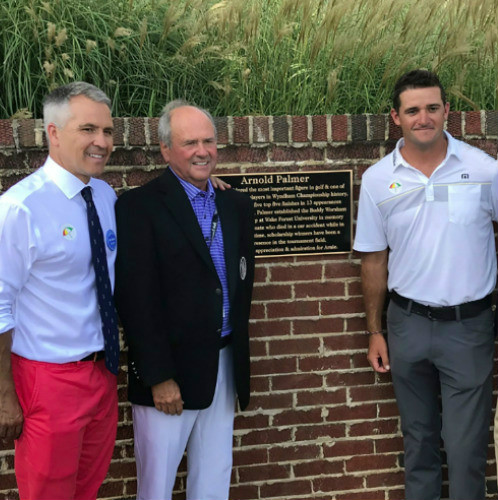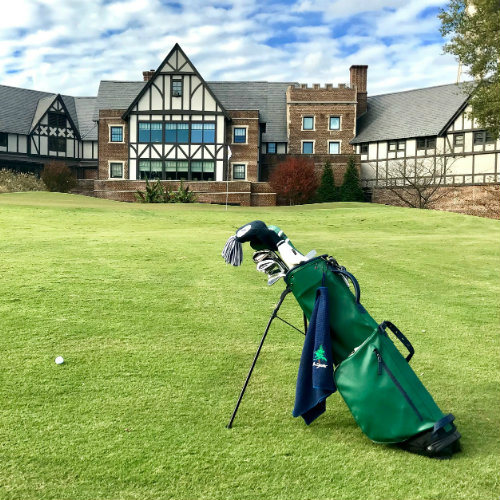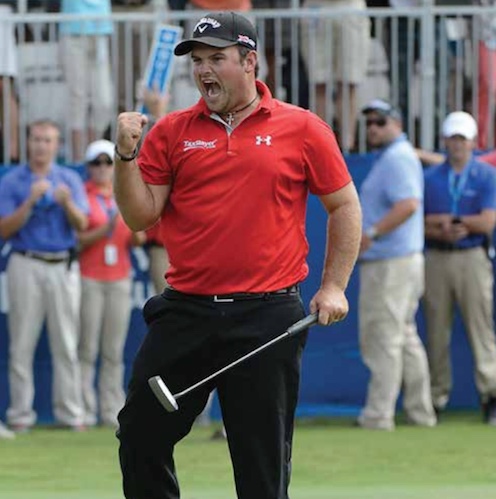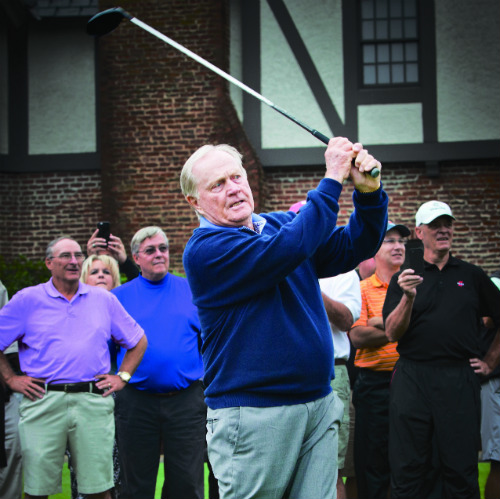
The King's Affinity for Greensboro
The first ACC golf tournament was staged in 1954 at Old Town Club and was won by Arnold Palmer, who had re-entered Wake Forest after a three year hitch in the Coast Guard. Palmer had withdrawn from school, despondent about the death of his close friend and Wake teammate Buddy Worsham.
Worsham was responsible for Palmer being at Wake Forest. Worsham was a prized recruit and before entering school asked athletic director Jim Weaver if he could bring along a friend. Weaver wanted to know if that friend could play golf and Worsham assured the AD that Palmer could, indeed, play.
With Palmer and Worsham as the anchors, Wake Forest won three Southern Conference championships. Palmer won the ACC individual title in 1948 and 1949 and was the NCAA individual winner in 1950.
On October 14, 1950, Worsham and teammate Gene Scheer went to the Wake Forest homecoming dance in Durham after Palmer and Jim Flick turned them down, going to a movie instead. That night, a one-car wreck killed Worsham and Scheer.
Palmer left Wake Forest after the 1954 ACC Championship without graduating, heading instead to a career on the PGA
Tour. When he started having success as a professional, he endowed the Buddy Worsham Scholarship at Wake Forest in 1963. Years later, Palmer endowed another scholarship in his own name and went on to endow six more scholarships
at Wake. But the Worsham Scholarship remains the most prestigious.
The Greater Greensboro Open tournament became important to Palmer. He played it 13 times, even coming to Greensboro during the years the tournament was played the week before the Masters, when most big-name players skipped the event to get ready for Augusta.
Palmer always said he had an affinity for Greensboro and the GGO, drawn to Sedgefield because of the memories of his old friend and teammate, Worsham. And as if playing in the event was not enough to boost the fortunes and galleries of the GGO, he once called in a big favor and got his friend Bob Hope to come to Greensboro and play in the pro-am.
In 1965, Palmer agreed to attend the first Champions Dinner. While flying to town, he encountered bad weather preventing his landing in Greensboro. He could land in Charlotte but would need a ride to Greensboro. Jim Melvin, Greensboro’s mayor at the time, convinced the Highway Patrol to pick up Palmer at the Charlotte airport and race him to Greensboro. And race they did: They made it to the dinner in an astounding 45 minutes.
Palmer never won the GGO, coming close in 1972 when he had a two-shot lead with three holes to play. A triple-bogey
coming in thwarted his chances. But that hole on his resume doesn’t diminish what Palmer meant to Greensboro and the tournament now known as the Wyndham Championship.
Last August, the Wyndham installed a plaque dedicated to Palmer on the Wall of Champions behind the ninth green at Sedgefield. With his grandson, Sam Saunders, in attendance, the plaque was dedicated.
It reads: “Widely considered the most important figure in golf and one of the most influential players in Wyndham Championship history, Arnold Palmer had five top five finishes in 13 appearances at Sedgefield. In 1963, Palmer established the Buddy Worsham Memorial Scholarship at Wake Forest University in memory of his friend and teammate who died in a car accident while in school. Since that time, scholarship winners have been a consistent presence in the tournament field, always with great appreciation and admiration for Arnie.”
This plaque now serves as a permanent reminder of Palmer’s contributions. Now, there’s something tangible that will
remind people of his legacy every time they pass.


